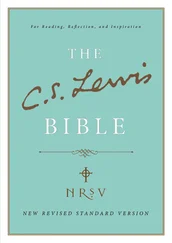Standard Template Library Programmer's Guide
Здесь есть возможность читать онлайн «Standard Template Library Programmer's Guide» весь текст электронной книги совершенно бесплатно (целиком полную версию без сокращений). В некоторых случаях можно слушать аудио, скачать через торрент в формате fb2 и присутствует краткое содержание. Жанр: Программирование, Справочники, на английском языке. Описание произведения, (предисловие) а так же отзывы посетителей доступны на портале библиотеки ЛибКат.
- Название:Standard Template Library Programmer's Guide
- Автор:
- Жанр:
- Год:неизвестен
- ISBN:нет данных
- Рейтинг книги:4 / 5. Голосов: 1
-
Избранное:Добавить в избранное
- Отзывы:
-
Ваша оценка:
- 80
- 1
- 2
- 3
- 4
- 5
Standard Template Library Programmer's Guide: краткое содержание, описание и аннотация
Предлагаем к чтению аннотацию, описание, краткое содержание или предисловие (зависит от того, что написал сам автор книги «Standard Template Library Programmer's Guide»). Если вы не нашли необходимую информацию о книге — напишите в комментариях, мы постараемся отыскать её.
Standard Template Library Programmer's Guide — читать онлайн бесплатно полную книгу (весь текст) целиком
Ниже представлен текст книги, разбитый по страницам. Система сохранения места последней прочитанной страницы, позволяет с удобством читать онлайн бесплатно книгу «Standard Template Library Programmer's Guide», без необходимости каждый раз заново искать на чём Вы остановились. Поставьте закладку, и сможете в любой момент перейти на страницу, на которой закончили чтение.
Интервал:
Закладка:
The only known way for a reference-counted implementation to avoid this problem is to mark a string as unsharable whenever there might be an existing reference or iterator to that string. That is, whenever a program obtains a reference or an iterator to a string ( e.g. by using operator[] or begin() ), that particular string will no longer use reference counting; assignment and copy construction will copy the string's elements instead of just copying a pointer. (We are not aware of any implementation that uses this technique and that also attempts to be thread-safe.)
This is a drastic solution: since almost all ways of referring to characters involve references or iterators, this solution implies, in effect, that the only strings that can be reference-counted are the ones that are never used. In practice, then, a reference counted implementation of basic_string can't achieve the performance gains that one might otherwise expect, since reference counting is forbidden in all but a few special cases.
A different solution is to abandon the goal of reference-counted strings altogether, and to provide a non-reference-counted implementation of basic_string instead. The draft standard permits non-reference-counted implementations, and several vendors already provide them. The performance characteristics of a non-reference-counted basic_string are predicable, and are very similar to those of a vector : copying a string, for example, is always an O(N) operation.
In this implementation, basic_string does not use reference counting. I have been using a reference counted implementation, and it works fine. Why haven't I seen problems?
The current implementations do work correctly, most of the time: preserving a reference to a character in a string is uncommon. (Although preserving iterators to strings may be more frequent, and exactly the same issues apply to iterators.) Some less contrived sequential programs also fail, though, or else behave differently on different platforms.
Multi-threaded applications that use a reference counted basic_string are likely to fail intermittently, perhaps once every few months; these intermittent failures are difficult to reproduce and debug. But it is likely that a large fraction of multi-threaded clients will fail occasionally, thus making such a library completely inappropriate for multi-threaded use.
There are several possible options, which are appropriate under different circumstances:
Ropes
Use the rope package provided by the SGI STL. This provides all functionality that's likely to be needed. Its interface is similar to the current draft standard, but different enough to allow a correct and thread-safe implementation. It should perform reasonably well for all applications that do not require very frequent small updates to strings. It is the only alternative that scales well to very long strings, i.e. that could easily be used to represent a mail message or a text file as a single string.
The disadvantages are:
• Single character replacements are slow. Consequently STL algorithms are likely to be slow when updating ropes. (Insertions near the beginning take roughly the same amount of time as single character replacements, and much less time than corresponding insertions for the other string alternatives.)
• The rope implementation stretches current compiler technology. Portability and compilation time may be an issue in the short term. Pthread performance on non-SGI platforms will be an issue until someone provides machine-specific fast reference counting code. (This is also likely to be an issue for other reference counted implementations.)
C strings
This is likely to be the most efficient way to represent a large collection of very short strings. It is by far the most space efficient alternative for small strings. For short strings, the C library functions in provide an efficient set of tools for manipulating such strings. They allow easy communication with the C library. The primary disadvantages are that
• Operations such as concatenation and substring are much more expensive than for ropes if the strings are long. A C string is not a good representation for a text file in an editor.
• The user needs to be aware of sharing between string representations. If strings are assigned by copying pointers, an update to one string may affect another.
• C strings provide no help in storage management. This may be a major issue, although a garbage collector can help alleviate it.
vector
If a string is treated primarily as an array of characters, with frequent in-place updates, it is reasonable to represent it as vector or vector . The same is true if it will be modified by STL container algorithms. Unlike C strings, vectors handle internal storage management automatically, and operations that modify the length of a string are generally more convenient.
Disadvantages are:
• Vector assignments are much more expensive than C string pointer assignments; the only way to share string representations is to pass pointers or references to vectors.
• Most operations on entire strings ( e.g. assignment, concatenation) do not scale well to long strings.
• A number of standard string operations ( e.g. concatenation and substring) are not provided with the usual syntax, and must be expressed using generic STL algorithms. This is usually not hard.
• Conversion to C strings is currently slow, even for short strings. That may change in future implementations.
This package was a minimal adaptation of the freely available Modena strings package. It was intended as a stopgap. We do not intend to develop it further.
It shares some of the reference lifetime problems of other implementations that try to conform to the draft standard. Its exact semantics were never well-defined. Under rare conditions, it will have unexpected semantics for single-threaded applications. It fails on the example given above. We strongly discourage use for multi-threaded applications.
Rope Implementation Overview
The rope container type included in SGI's version of the STL is based loosely on the ropes in the Xerox Cedar environment or C "cords", as described in Boehm, Atkinson, and Plass, "Ropes: An Alternative to Strings", Software Practice and Experience 25 , 12 (Dec 1995), pp. 1315–1330.
A rope is represented as a pointer to _Rope_RopeRep structure, which represents a tree node. Every tree node corresponds to a piece of a rope. Although we refer to "tree nodes", each such piece can be shared between different ropes, or can even be reused in the same rope if the corresponding substring is repeated. Thus ropes are really represented as directed acyclic graphs. Nonetheless, we will continue to refer to trees, since that is both the usual case, and more intuitive.
Each tree node contains a size field giving the length of the rope piece, a depth field specifying the depth (or height) of the tree rooted at the node, a boolean field indicating whether the subtree has been balanced, and a tag field indicating which of the four variants or subclasses of _Rope_RopeRep is used to represent the list. (The balanced bit is really of interest only for concatenation tree nodes, see below.)
Читать дальшеИнтервал:
Закладка:
Похожие книги на «Standard Template Library Programmer's Guide»
Представляем Вашему вниманию похожие книги на «Standard Template Library Programmer's Guide» списком для выбора. Мы отобрали схожую по названию и смыслу литературу в надежде предоставить читателям больше вариантов отыскать новые, интересные, ещё непрочитанные произведения.
Обсуждение, отзывы о книге «Standard Template Library Programmer's Guide» и просто собственные мнения читателей. Оставьте ваши комментарии, напишите, что Вы думаете о произведении, его смысле или главных героях. Укажите что конкретно понравилось, а что нет, и почему Вы так считаете.











